In the last week bulldozers have been sent in to demolish tombs in Cairo’s so-called City of the Dead, the great cemetery that stretches for nearly ten kilometres along the foothills of the desert plateau to the east of the city.
For more than a thousand years this area has been the burial place of the great and the good of Cairo, from descendants of the Prophet to Egypt’s best loved singer Umm Kulthum, via Mamluk Caliphs and Sultans, scholars and mystics, politicians, and members of Egypt’s 19th- and 20th-century royal family. The Mamluk tomb complexes of the 13th to 15th centuries are architectural masterpieces that have attracted foreign sightseers and artists from the 19th century onwards (and adorn Egypt’s banknotes). Most of the City of the Dead was inscribed on UNESCO’s World Heritage List with other parts of Historic Cairo in 1979, but far from becoming ‘museumified’ it remains a vital part of Cairo’s fabric. Cairenes flock to the cemeteries on outings to family plots – many still in use, with reception rooms and drinking fountains for visits – or to attend the moulids (birthday celebrations) of local saints at their shrines, traditions that many Egyptians proudly trace back to pharaonic rituals. Every Friday, a busy market sees the wide streets of the cemeteries filled with people selling everything from pets to second-hand bathroom suites.
July’s demolitions have literally driven straight through this ecosystem. The City of the Dead is also home to the living: gravediggers and caretakers of family mausoleums often live on-site, while other tombs house families of migrants to the city attracted by its cheap rents, quiet streets, and water and electricity connections. Urban historians and architects have long attempted to balance the demands of site preservation and restoration with Egypt’s scarce resources for conservation – often focused on pharaonic monuments, or dependent on the interests of foreign donors – and the needs and expectations of the cemeteries’ users and inhabitants. The timing of the demolitions, on the eve of the Muslim festival of Eid al-Adha when family visits to graves are especially popular, has upset many people, who face moving their ancestors’ bodies at short notice.
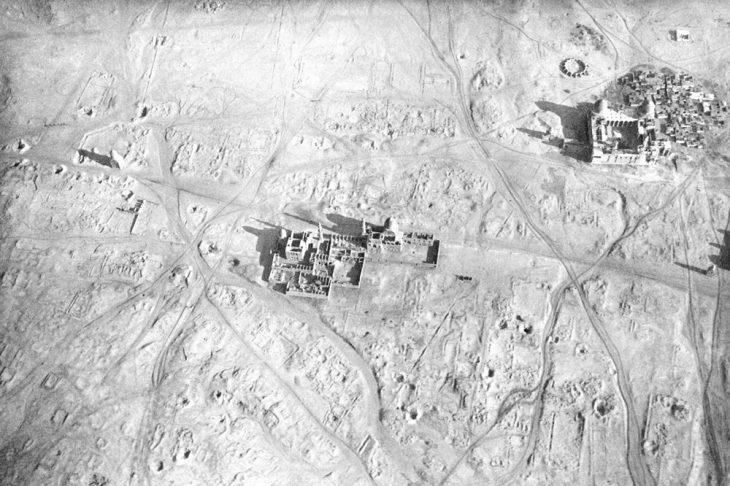
Aerial view of the Mamluk tombs in Cairo, taken in 1904 by Swiss balloonist and photographer Eduard Spelterini, before the construction of many of the tombs now being demolished. The ‘Paradise axis’ runs diagonally past the domed Mamluk tomb of Sultan Qansuh Abu Said (1499 AD) on the left-hand side
Road construction projects are behind the recent destruction of graves in the City of the Dead. More than 20,000,000 people live, work, and commute in the Greater Cairo area. Even though car ownership in Egypt stands at less than 50 cars per thousand people, Cairo’s traffic jams are heavy and of a legendary tedium. Road building has long been technocratic Egyptian governments’ panacea for anticipated traffic and population growth, and in the past five years there have been road improvement projects throughout the country, especially in Cairo.
At the northern end of the cemetery, existing roads running through the cemetery have been widened to prepare the way for a new multi-lane highway (the ‘Paradise Link’), while at the southern end of the cemetery a flyover on concrete pillars is weaving its way through the necropolis – ironically, its path shortening the route between Islamic Egypt’s first capital, Fustat, and the New Administrative Capital now rising in the Eastern desert.
These new road-building measures in the City of the Dead are taking place within the UNESCO Historic Cairo district that the Egyptian government has resolved to preserve. The World Heritage Unit at UNESCO acknowledges the destruction and has stated that it has raised the matter with the Egyptian government. It declined to comment on the reports, citing ‘operational guidelines’ that require the Egyptian government itself to provide information for their consideration, which it has not so far done. Foreign archaeological institutions, which operate in Egypt under the supervision of the Ministry of Tourism and Antiquities, have also made no formal comment, to the dismay of some activists. ‘Foreign institutions that claim to be working to preserve Egyptian history and heritage need to stand up to this destruction, regardless of the consequences, or else run the risk of trivialising their work,’ says Dr William Carruthers, a fellow at the University of East Anglia. ‘What matters more: excavation permits or family tombs?’
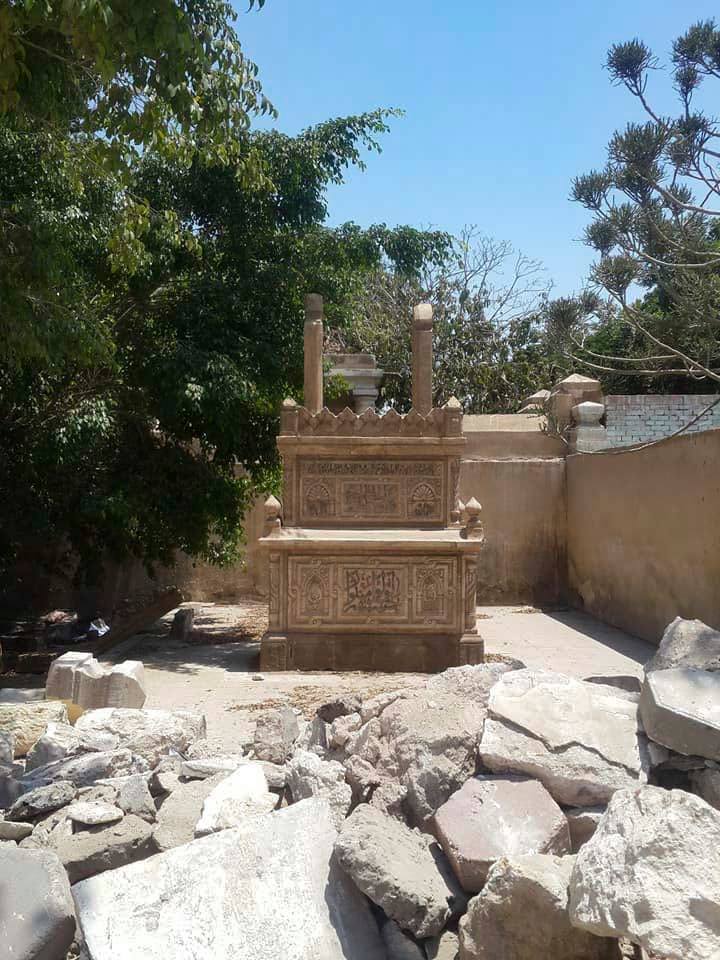
After the bulldozers – in the Cairo Necropolis on 21 July 2020. Photo: © Alia Nassar
A statement posted on Facebook by the Ministry of Tourism and Antiquities called claims of damage to monuments ‘utterly without truth’, stating that ‘the development is far away from any registered Mamluk sites of value, and […] the affected tombs are not registered as Muslim or Coptic antiquities but rather modern graves’. Grave owners, architects and urban planners have rejected these claims, pointing out that the new roads and flyovers can do nothing but damage the historic context of the listed monuments nearby. Although unregistered, many of the threatened mausoleums are important examples of 19th– and 20th–century work. They include art deco and pharaonic-style buildings that are largely ignored in official views of Egyptian architecture, but which historians increasingly view as testaments of colonial and independent Egypt’s engagement with modernity. The tombs affected provide a microcosm of the last hundred years of middle and upper class Egyptian society, including nationalist ‘martyrs’ killed protesting against British occupation, ministers, and writers like Ihsan Abdel Quddous, whose grandson has written of his family’s scramble to re-house his remains.
These rival claims go to the heart of definitions of Egyptian heritage, which the Ministry of Tourism and Antiquities restricts to specifically registered buildings at least a hundred years old, but which critics demand should be widened in chronology and scope. Tensions between modernisation and heritage, the state and its citizens, and the needs of the present and the past, remain unresolved. The past, though, is a finite commodity.
Unlimited access from just $16 every 3 months
Subscribe to get unlimited and exclusive access to the top art stories, interviews and exhibition reviews.


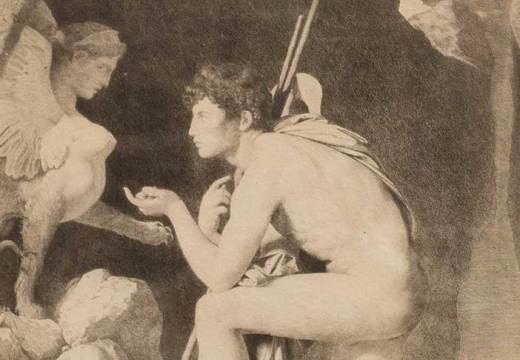
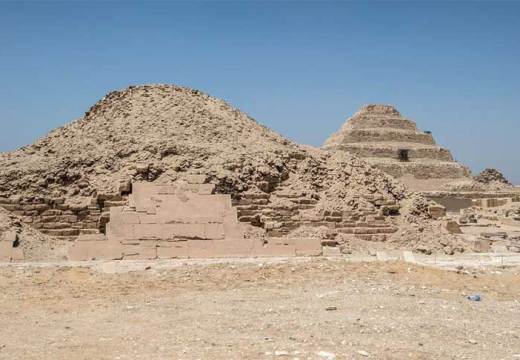
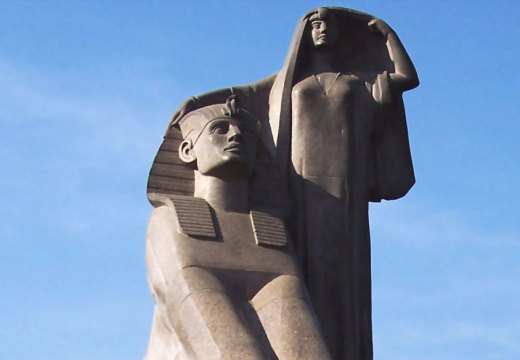









![Masterpiece [Re]discovery 2022. Photo: Ben Fisher Photography, courtesy of Masterpiece London](http://www.apollo-magazine.com/wp-content/uploads/2022/07/MPL2022_4263.jpg)
It’s time for the government of London to return to its rightful home